

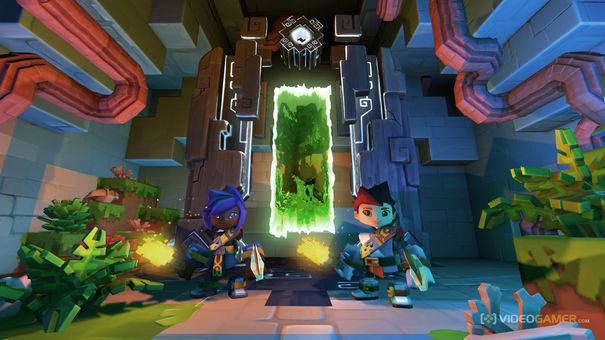

Since starting out writing games in their bedrooms more than thirty years ago, the Oliver Twins have been ever-presents in an industry that tends to forget its history, unless it can make a quick buck out of it. From creating the likes of Dizzy through to the prolific output of their now-defunct former company Blitz, the Olivers have seen trends come and go, development teams grow and shrink, and business models adapt and change. For most of the last 20 years, they've been working on predominantly licensed games, to strict specifications and limited critical acclaim. With SkySaga: Infinite Isles, they – along with their new 70-strong company Radiant Worlds – have been given a rather different mission by Korean backers Smilegate: to "make this the biggest game in the world", as CEO Philip Oliver puts it.
Their strategy, so far, appears to be to take what is already the biggest game in the world, Minecraft, and expand elements of the genre it popularised (if didn't create – "He [Notch] copied it from Infiniminer", says Andrew, the CTO). Voxel-based with an emphasis on loot, building and survival, SkySaga gives players the tools to create a world of their own on one of the titular floating isles. After that, it's possible to jump in and out of friends' worlds, or go adventuring in various dungeons together. What you do with your island is up to you, however: if you want to hunt loot to improve your city forever, you can, and if you want to trade or even invade other worlds then that's possible too.
What I saw was very early, and I wasn't able to play it. Our time with the game consisted of a live demo performed by Benjamin Fisher, SkySaga's Design Director, who showed off the homeworlds, adventuring, PvE against knights in a giant castle, and the scavenging/crafting mechanics.
Each work as you'd expect, but it's clear that a lot of work is going into a project that many will probably write off as something made to cash in on a cultural phenomenon. It's good-looking: obviously inspired by Mojang's work, but with a clean, crisp aesthetic that is a generation ahead of that game. As with most things, Philip Oliver is incredibly enthusiastic (he has a way of laughing a bit too hard, whether that's nervous laughter or not, before catching himself doing it and suddenly stopping) about the technology, showing how players are able to flood areas in real-time by hacking voxels out of a river or dam. And there are grand plans for not just the game, but for the franchise as a whole, which Philip attests could "outlive me. Why not?" Plans are afoot for expansion onto consoles and iOS, TV shows, and other tie-ins.
First, however, SkySaga has got to establish itself as something other than just 'another Minecraft'. The brothers, along with co-founder and COO Richard Smithies, believe that they can. "[Minecraft] isn't a direct competitor, it's just complimentary" claims Smithies. "They uncovered the fact that people hark back to their childhood, playing with Lego and want to be creative" adds Andrew. Benjamin Fisher is keen to stress that Minecraft is just one from a list of titles they're drawing from.
"I've got a list of ten games that come up on a regular basis as influences. You could call it a cross between Minecraft, Animal Crossing, Wind Waker, Destiny is in there. Then there's random point of references like ToeJam and Earl, or Spelunky. We've taken it in a slightly different direction. There's emphasis on adventuring...you're allowed to like both."
If anyone knows that it's possible to get players to like two games of a similar nature, even if one is all-encompassing, it's the Olivers. They've seen most of the industry's major technological changes, and the shift in mindset that follows. For a time, first-person games were called 'Doom clones', before Duke Nukem 3D and Quake showed different approaches to the genre and broke that way of thinking. Or, as Andrew puts it, "reclaims it a little bit". Smithies reckons that it already has the tools to differentiate SkySaga, things "like the adventure director, dual wielding. Minecraft is awesome, amazing, and everything else. There's nothing to stop you playing both." Smithies' first example is the tech that creates the allegedly infinite variants of worlds, and the creatures within them. His second seems like the sort of thinking that was tired even when it reached its zenith in 2004.
Still, SkySaga – and Radiant Worlds – has the backing to give its plans every chance of success, even if it takes time. Bankrolling the project is Smilegate, the Korean company behind the hugely successful online FPS CrossFire. Its previous hits mean the firm brings a lot of financial muscle to the project, but not, according to the Radiant Worlds founders, a draconian management style.
"It's a partnership, it's not controlled. It's cool," says Smithies. "We need each other as much as we need each other." Smilegate is also working on making the game a hit in the East. It's also contributing to development, honing the game for its home market.
"An interesting fact, very high level, speaking generally, is that players in Korea may move to level up quickly to enjoy PvP, whereas in the West it's a little more creativity and freedom to roam" Smithies continues. "Little things like that, which we suspected but they've confirmed. But the game caters to both, so it's no problem."
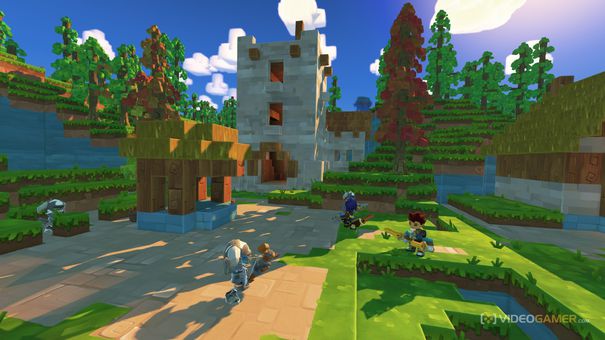
Whether the game, even if it caters well to audiences, does as well as Radiant Worlds and Smilegate plans is another matter. Andrew Oliver maintains that he feels "like it’s the start of a genre, and it will go in different ways." An alpha is planned to launch in November, and requires some fairly-hefty specs (for more casual users), described as "gaming PC" by the company – 4 gigs of RAM or more, a CPU greater than 2Ghz, and a GPU equivalent to a Radeon HD 5850, or Nvidia GTX560. The barrier to entry, then, is higher than that of the minimum for its obvious competitors.
For its part, Radiant Worlds doesn't see it as a problem. It's aiming to reduce the specs downwards over time, keeping CPU requirements the same but dropping to 2 gig RAM and the GPU level to around Nvidia's GT220. It won't be feature-complete to begin with, lacking PvP for example, but SkySaga is planned for the long-haul. "We will go for years on Infinite Isles" claims Philip. "Minecraft's had five years. Can you guess where we'll be in five years? Because I can't!". He lets out that laugh.
It's difficult to know where SkySaga will be in two, let alone five years, but it has both money and passion behind it. The Olivers have seen the highs and lows of video game development, from early success to Blitz going bust. But they're aiming for the spectacular with their new game, wanting it to be the best at everything it does, from world-building to sensible monetisation: something that Smilegate has demanded and which Philip wants "to be want to be best in class at, never conning anyone." The minimum age sign-up is 13, and although it's free-to-play, if players want to spend cash to " maybe reduce some grind" or perhaps even buy a new homeworld, they can.
There's a lot riding on SkySaga, but to hear the Olivers say it they wouldn't want it any other way. They pitched it around, to many other publishers, who weren't interested ("You go in, do your full pitch, and then they say 'we're kind of thinking of a Spongebob game, can you do that?'" says Andrew). Their decision, in the past, to make game like Spongebob and its ilk led to other developers, who had also been big in the 80s before fading away, to accuse the Olivers, according to Smithies, of 'selling out'.
Their response was that they "just moved with the market, we made the games that people were buying.” If anything, SkySaga seems to be the purest distillation of that notion, refined for the always online and potentially-infinite worlds of 2014.
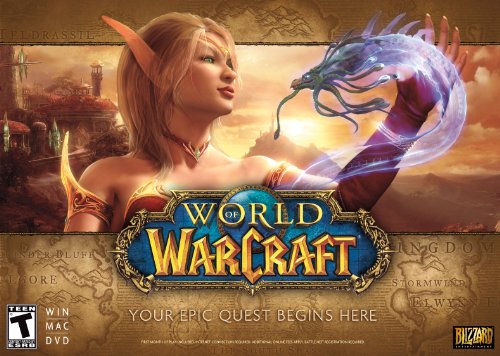

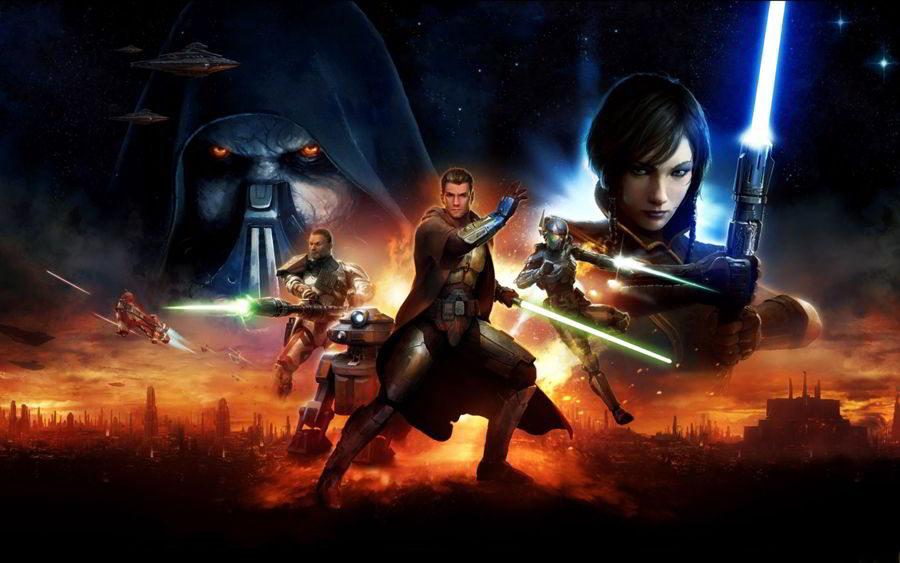
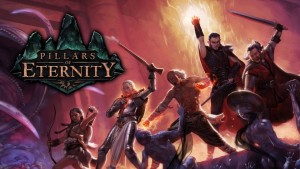
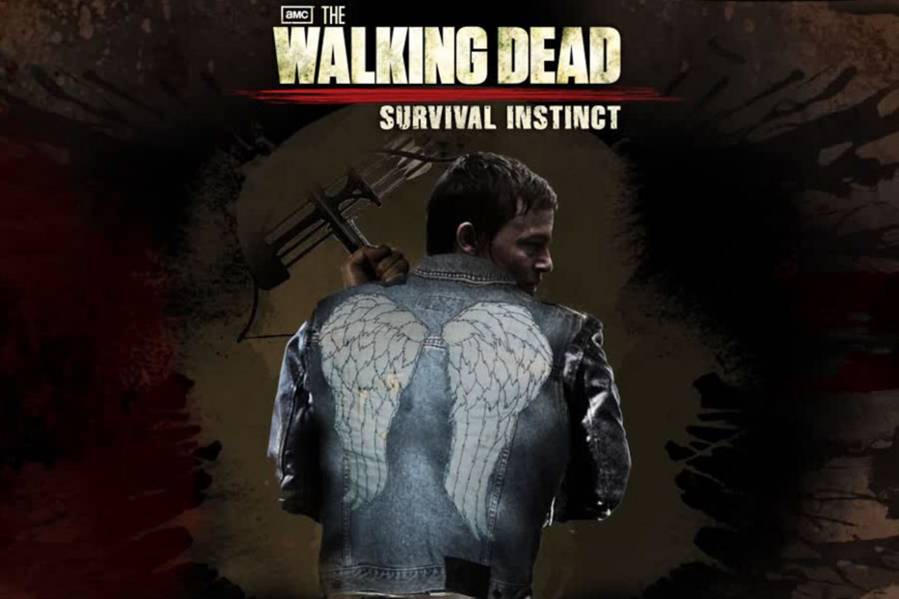 The Walking Dead Survival Instinct Guide: Dealing With Walkers
The Walking Dead Survival Instinct Guide: Dealing With Walkers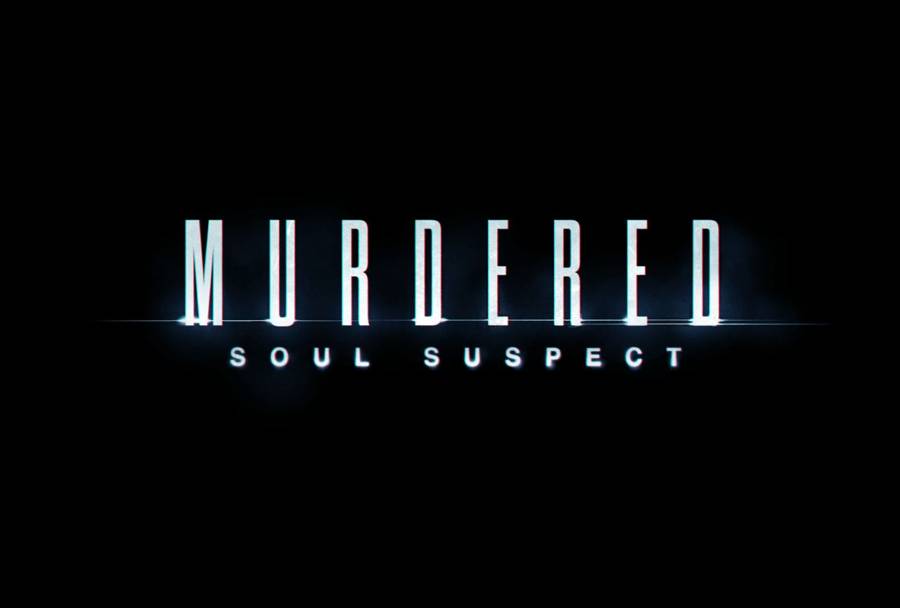 Murdered Soul Suspect My Life Guide
Murdered Soul Suspect My Life Guide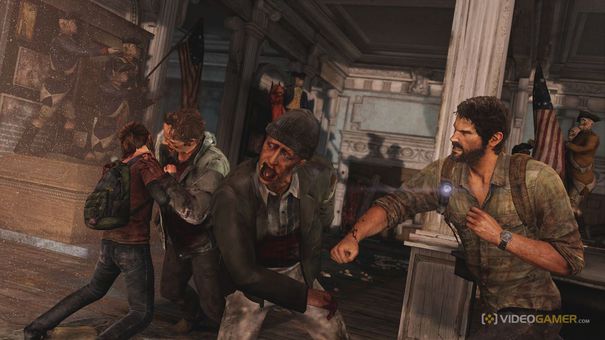 Is The Last Of Us the best game ever made?
Is The Last Of Us the best game ever made?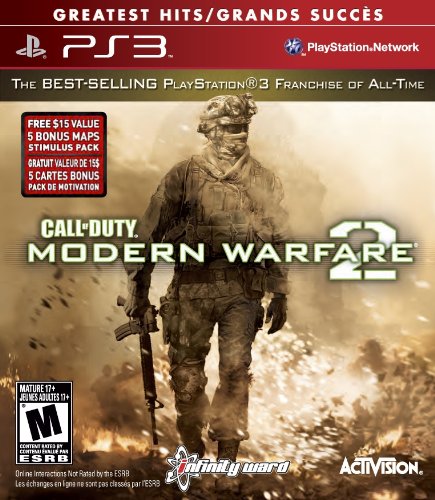 Modern Warfare 2
Modern Warfare 2 The Risk Behind The RAM: Is next
The Risk Behind The RAM: Is next